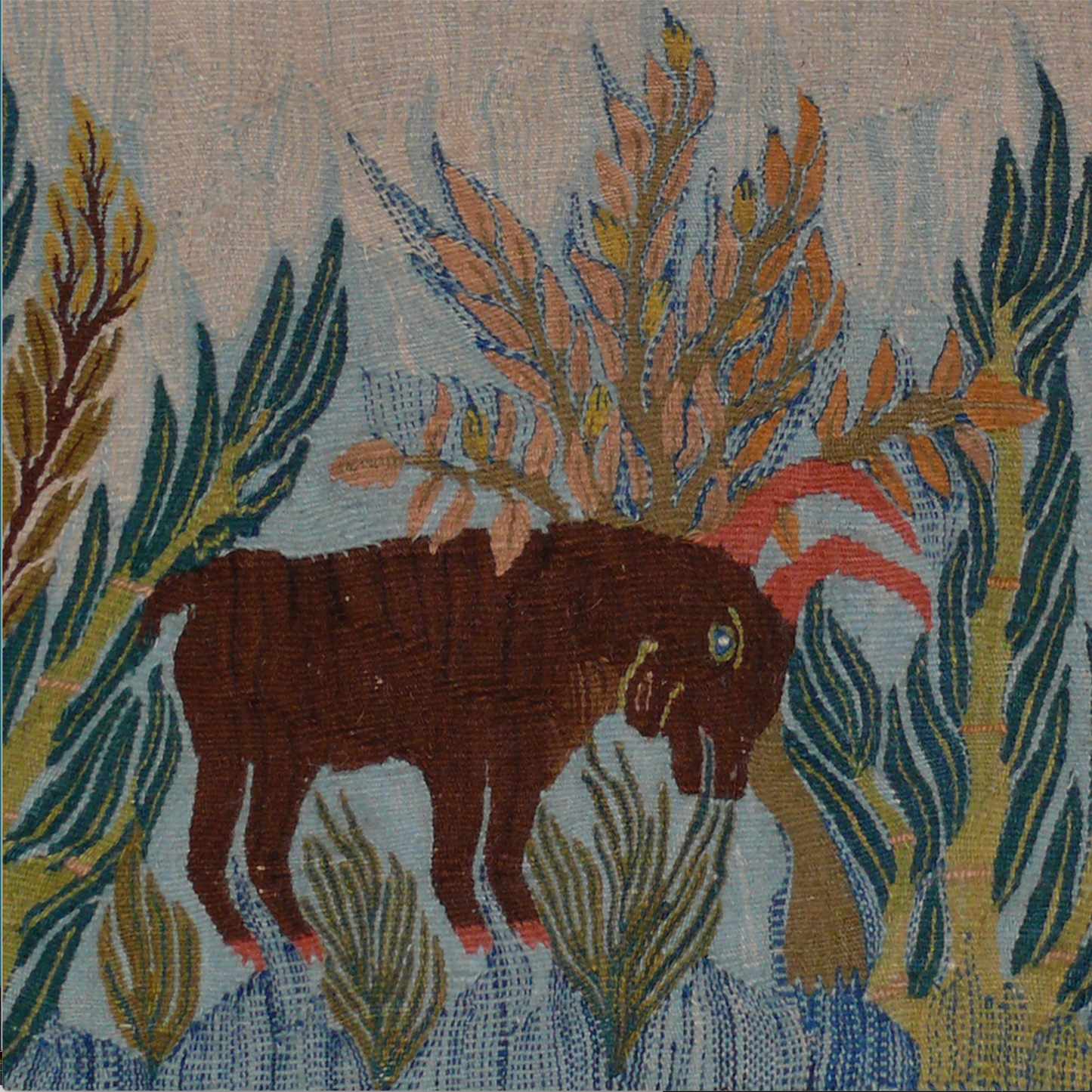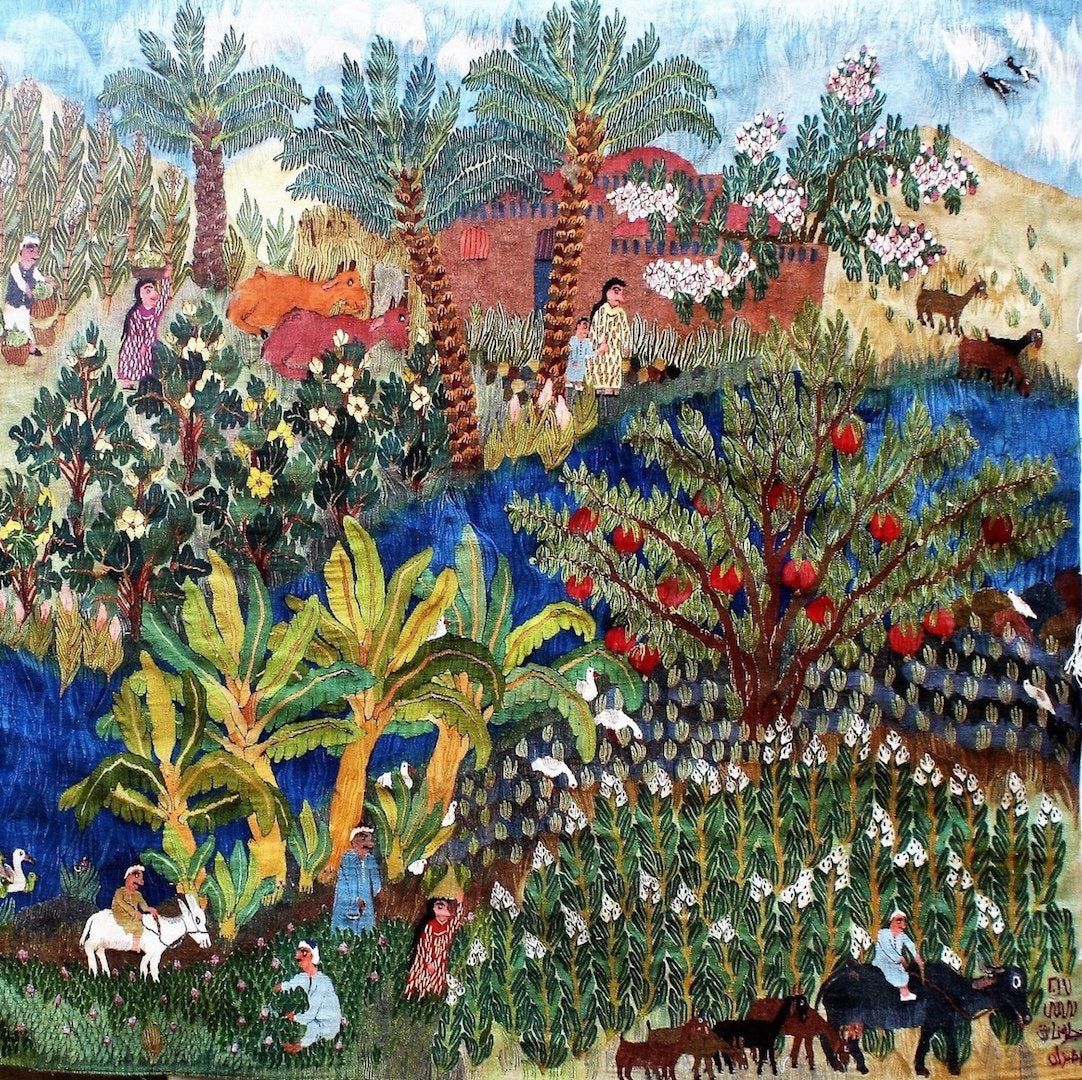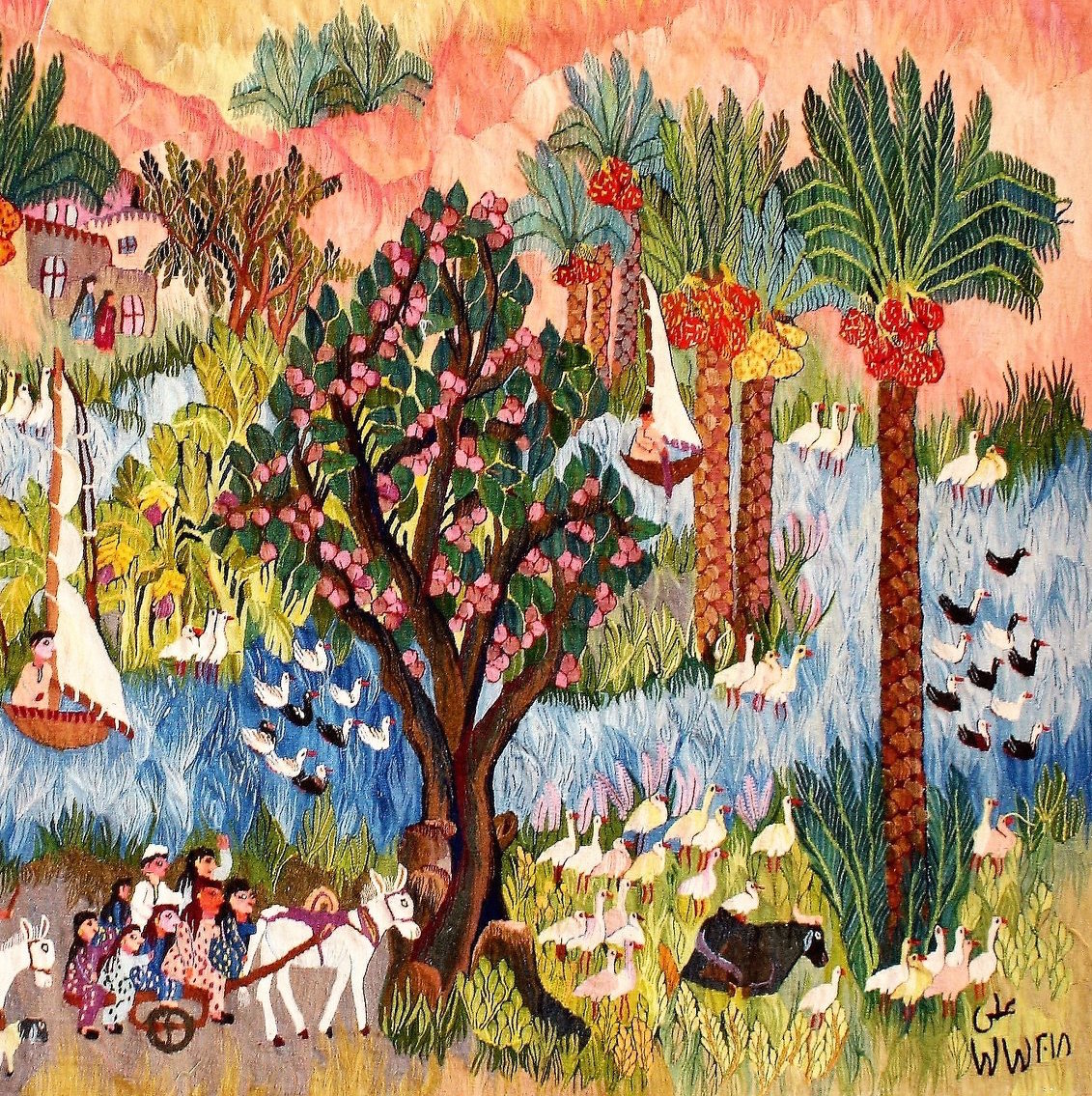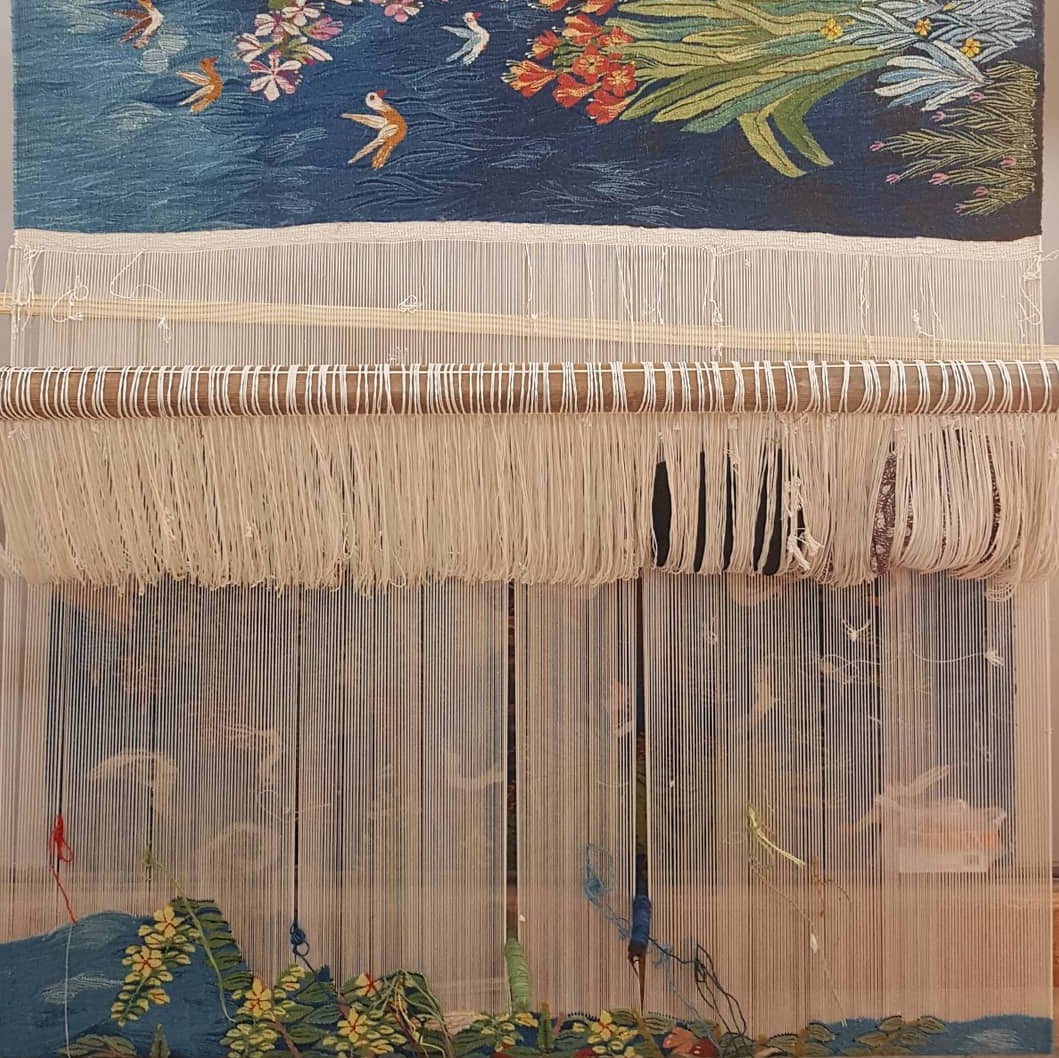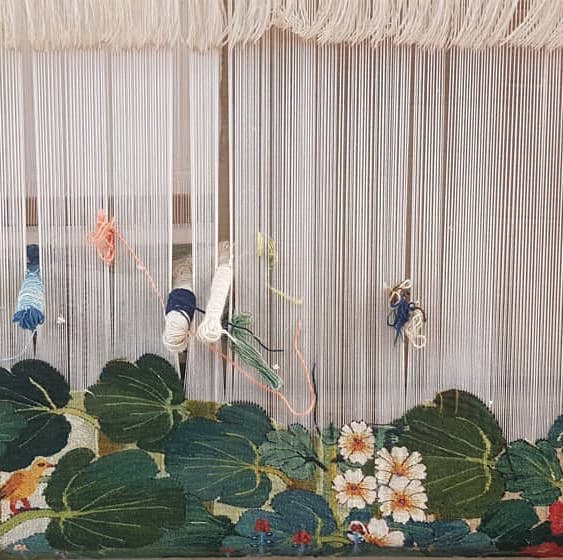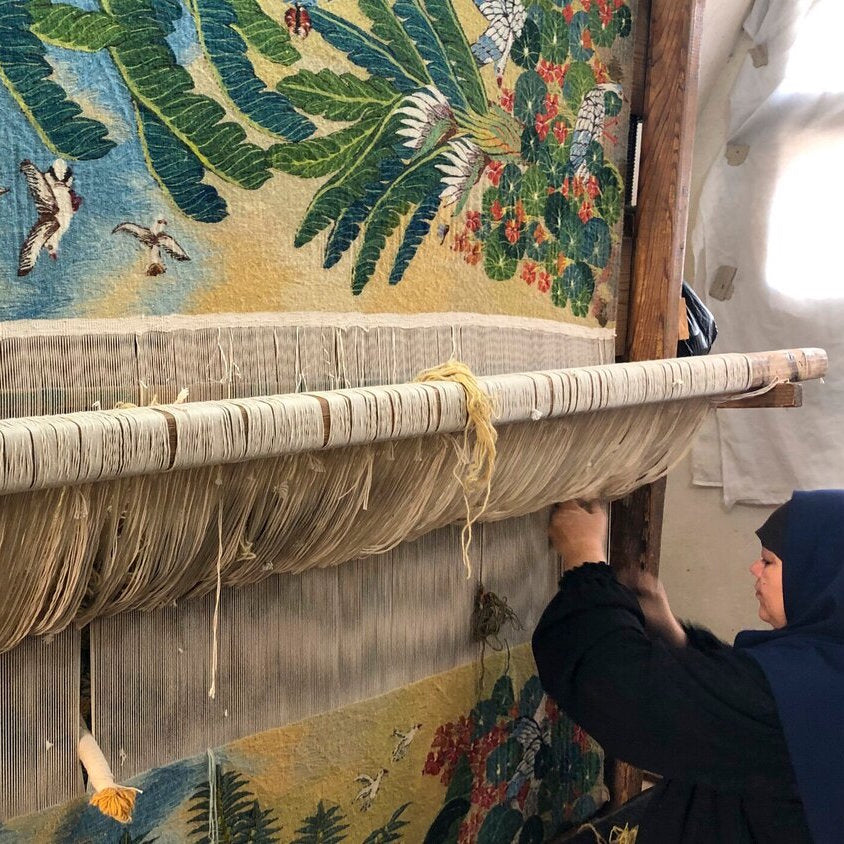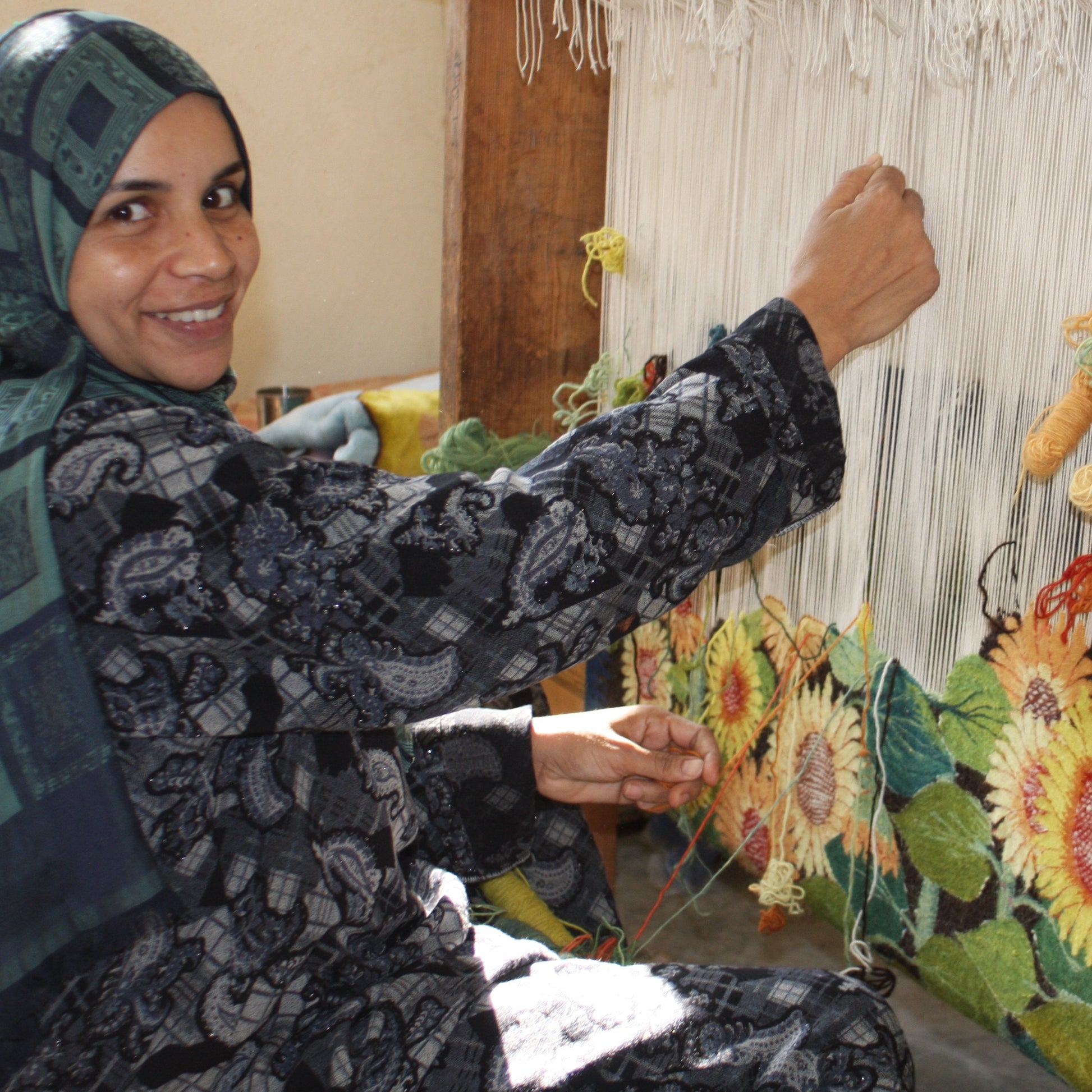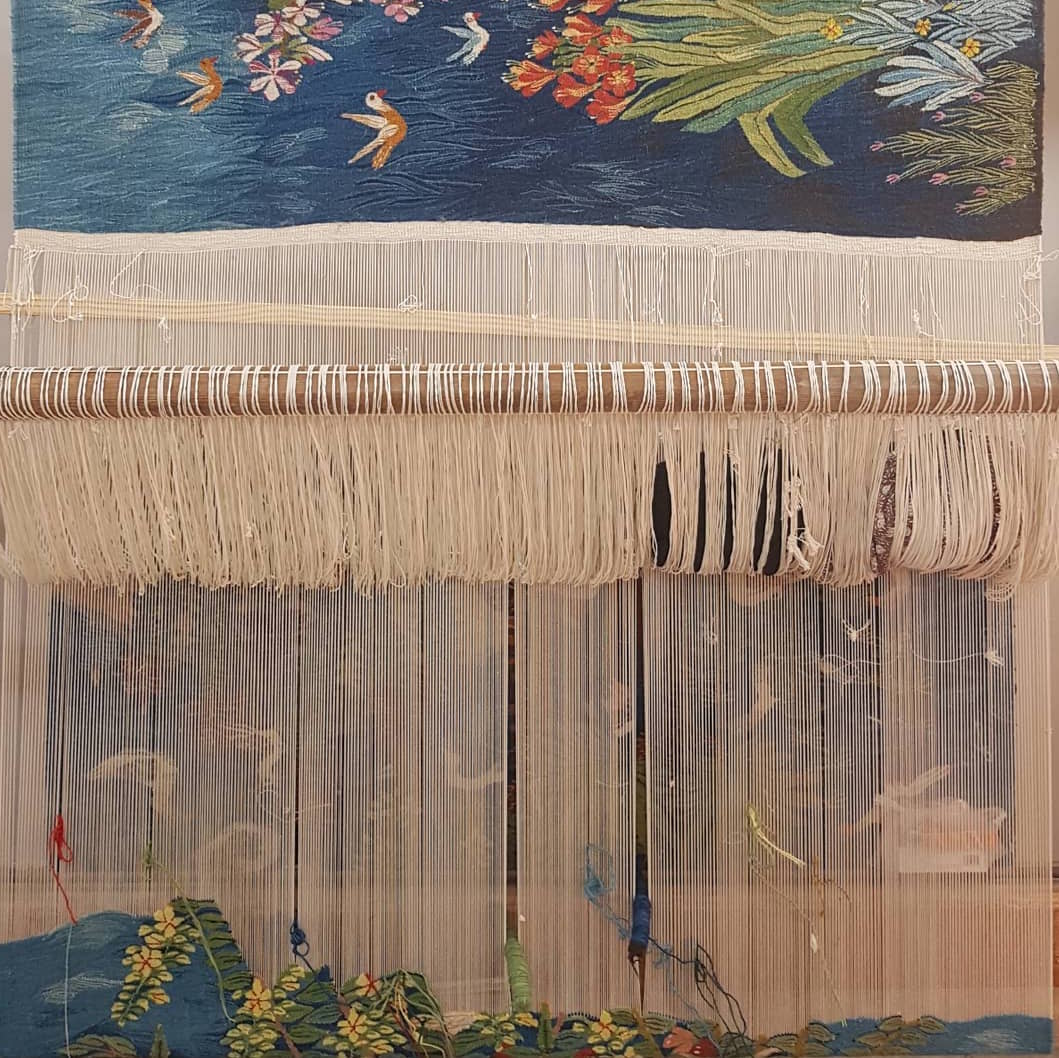Egypt, Wissa Wassef, Tapestry
In 1952, Harrania, a small Coptic village on the road between Cairo and the great pyramids, was indistinguishable from any other rural village along the Nile. That was before a remarkable man established a small tapestry studio in the village and taught a group of young children to weave. No one but Ramses Wissa Wassef, the freethinking architect and educator who set the simple social experiment in motion, imagined where the first group of students would take the ancient tradition – and art – of weaving. But today the result of his vision is clear: a unique collection of tapestries, exhibited and collected worldwide, that expresses the richness of Egyptian village life.
Wissa Wassef opened the Harrania studio on the premise that all of us are born with innate creative instinct that is suppressed by conformist and abstract educational systems. He believed that ‘every human being was born an artist but that their gift could be brought out only if artistic creation was encouraged by the practicing of a craft from early childhood.’
Wissa Wassef was featured in Selvedge Magazine issue 92 Comfort
To further follow the story of Wissa Wassef, please find them on social media here.
Share

